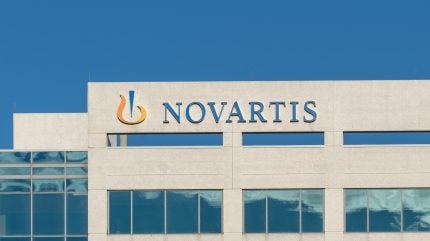Novartis bags paediatric FDA label expansion for Lutathera
24 Apr 2024
Drug ApprovalPhase 2Orphan DrugAcquisitionRadiation Therapy

Preview
Source: Pharmaceutical Technology
Novartis has received a US Food and Drug Administration (FDA) approval for the label expansion of its peptide receptor radionuclide therapy (PRRT), Lutathera (lutetium Lu 177 dotatate).
The therapy is approved in paediatric patients aged 12 years and older with somatostatin receptor-positive (SSTR+) gastroenteropancreatic neuroendocrine tumours (GEP-NETs). The US FDA first approved Lutathera as a combination therapy with a long-acting octreotide for the same indication in the adult population in 2018.
GlobalData is the parent company of Pharmaceutical Technology.
See Also:
FDA approves Utility Therapeutics’ Pivya tablets for UTIs

Preview
Source: Pharmaceutical Technology
Novartis reports 25% increase in net income in Q1 2024

Preview
Source: Pharmaceutical Technology
The US FDA approval decision was based on the data from the open-label Phase II NETTER-P trial (NCT04711135). The trial enrolled 11 patients aged 12–18 years with either GEP-NETs or pheochromocytoma and paraganglioma (PPGL), which are neuroendocrine tumours of the adrenal glands and paraganglia, respectively.
Novartis did not disclose the detailed results of the trial but noted that the safety profile was consistent with the results of NETTER-1 study (NCT04954820) that studied adults with this same condition. The company said that the “estimated radiation absorbed dose in paediatric patients was within established organ thresholds for external beam radiation and comparable to that in adults for the approved dose”.
There has been an increased interest in the development of radiopharmaceuticals. Last month, AstraZeneca signed a $2.4bn deal to acquire Fusion Pharmaceuticals, which specialises in radioconjugates. Fusion’s lead candidate, FPI-2265 is a radioconjugate that targets prostate-specific membrane antigen (PSMA). It is being evaluated as a treatment for metastatic castration-resistant prostate cancer (mCRPC) in a Phase II trial (NCT05219500).
Telix Pharmaceutical also expanded its radiopharmaceutical pipeline with the acquisition of QSAM Biosciences. QSAM’s lead candidate, CycloSam (samarium-153-DOTMP), has received an orphan drug designation and rare paediatric disease designation from the US FDA for the treatment of paediatric osteosarcoma.
For more details,please visit the original website
The content of the article does not represent any opinions of Synapse and its affiliated companies. If there is any copyright infringement or error, please contact us, and we will deal with it within 24 hours.
Organizations
Indications
Targets
Hot reports
Get started for free today!
Accelerate Strategic R&D decision making with Synapse, PatSnap’s AI-powered Connected Innovation Intelligence Platform Built for Life Sciences Professionals.
Start your data trial now!
Synapse data is also accessible to external entities via APIs or data packages. Leverages most recent intelligence information, enabling fullest potential.





